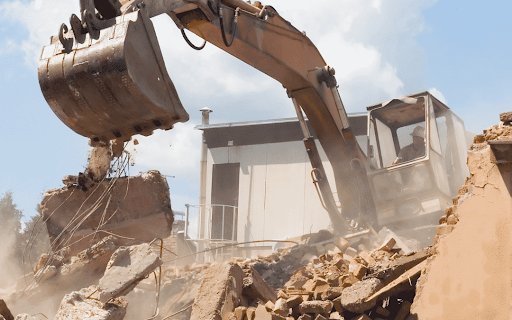When it comes to site preparation for well drilling, proper planning is essential for ensuring a successful and efficient operation. Well drilling not only involves the technical aspects of reaching the aquifer but also requires careful attention to site conditions and debris removal. This comprehensive guide will cover the key considerations for preparing a site for well drilling and how to manage debris effectively.
Understanding Well Drilling
Well drilling is the process of creating a hole in the ground to access groundwater. This is typically achieved using specialized drilling equipment and techniques, depending on the depth of the water table and the geological conditions of the area. The goal is to establish a sustainable water supply while minimizing environmental impact and ensuring the safety of the surrounding area.
Importance of Site Preparation
Site preparation is a critical phase of the well drilling process. Proper preparation ensures that the drilling operation can proceed smoothly, reducing the risk of unexpected complications. It also plays a significant role in safety and efficiency. This preparation involves evaluating the site, planning logistics, and ensuring that all necessary resources are available before drilling begins.
Steps for Effective Site Preparation
1. Site Assessment
Before any physical work begins, a thorough site assessment is crucial. This includes evaluating the soil type, existing vegetation, and proximity to water bodies. Analyzing these factors helps determine the most suitable drilling method and equipment. Additionally, understanding local regulations and obtaining necessary permits is essential to ensure compliance with environmental and safety standards.
2. Access Planning
Establishing access to the drilling site is another vital step. Depending on the location, this may involve creating or clearing roads or paths to accommodate drilling equipment. Ensuring that heavy machinery can reach the site without causing damage to the surrounding area is paramount.
3. Debris Removal
One of the most significant aspects of site preparation is debris removal. Clearing the site of unwanted materials, such as rocks, fallen branches, and old structures, is essential for a safe drilling environment. Debris can hinder drilling operations, create hazards for workers, and increase the likelihood of equipment damage. Effective debris removal not only facilitates the drilling process but also promotes a safer working environment.
Methods for Debris Removal
-
Manual Removal: For small sites, debris can often be cleared by hand, using tools like shovels and rakes. This method is labor-intensive but can be effective for light debris.
-
Heavy Machinery: In cases where large debris or extensive clearing is required, heavy machinery such as bulldozers or excavators may be necessary. These machines can quickly remove substantial amounts of debris, making the site ready for drilling.
-
Disposal Considerations: It’s crucial to have a plan for debris disposal. Local regulations may dictate how certain materials must be handled. Ensuring that debris is disposed of properly not only complies with legal requirements but also supports environmental responsibility.
4. Utility Identification
Before commencing well drilling, it’s important to identify any existing utilities in the area, such as gas, water, or electrical lines. This helps prevent accidental damage during drilling and ensures the safety of the drilling crew. Utility companies can assist in mapping out these lines to avoid potential hazards.
5. Environmental Considerations
Environmental impact must always be considered during site preparation. This includes assessing how drilling activities may affect local wildlife, water sources, and vegetation. Implementing measures to mitigate any negative impacts is essential. For instance, using silt fences can help prevent soil erosion and protect nearby water bodies.
6. Preparing the Drilling Site
Once the site is cleared and all utilities have been accounted for, the next step is preparing the drilling site itself. This may involve leveling the ground, creating a secure platform for equipment, and setting up necessary infrastructure like water supply lines or power sources.
Conclusion
Effective site preparation is crucial for successful well drilling. By understanding the importance of debris removal and following a systematic approach to site assessment and planning, you can ensure a safe and efficient drilling operation. From assessing the site to managing debris and considering environmental impacts, each step plays a vital role in the overall success of the well drilling process. By taking the time to prepare adequately, you can minimize risks and maximize efficiency, leading to a successful well drilling project that meets all your water supply needs.


